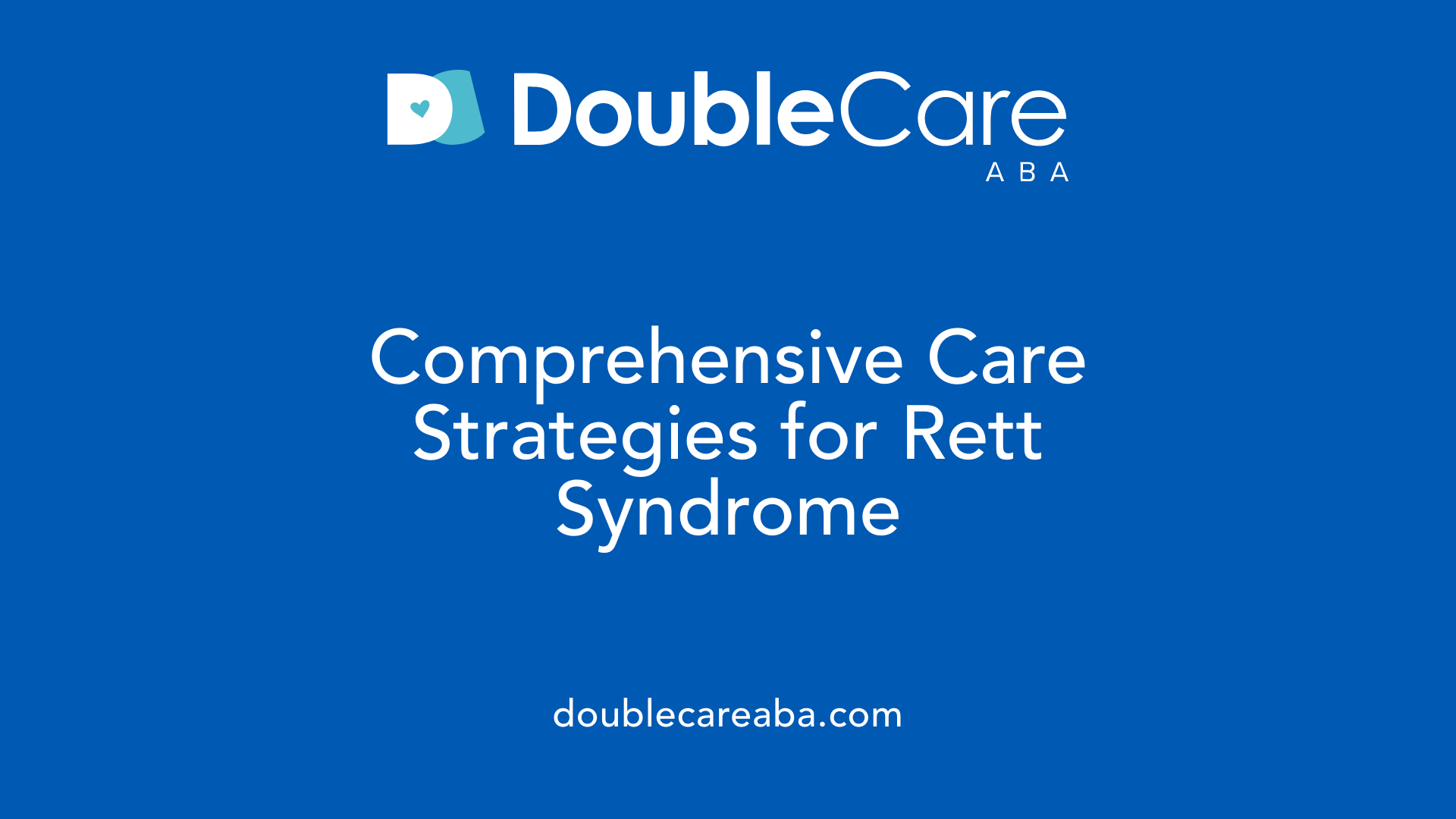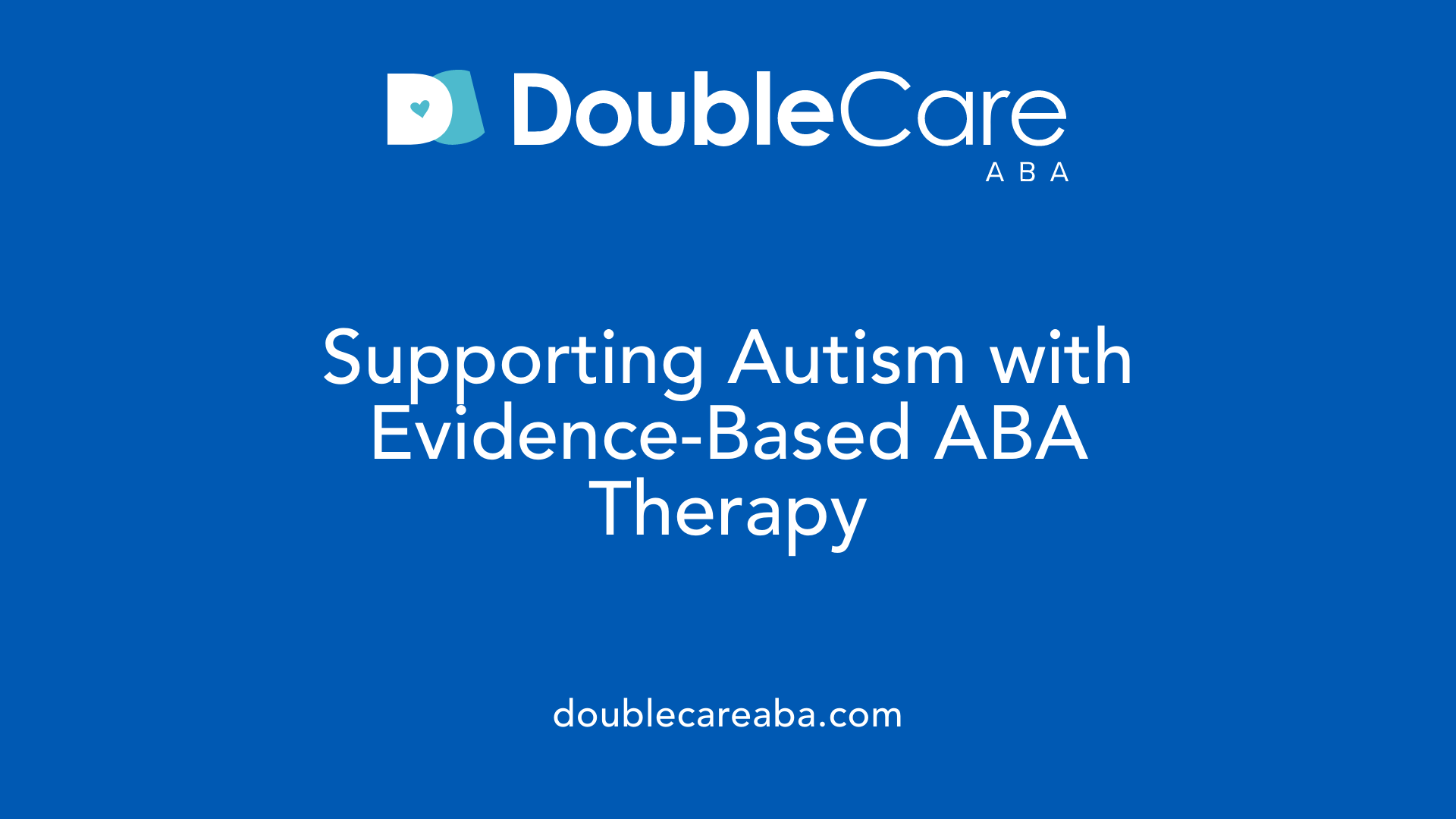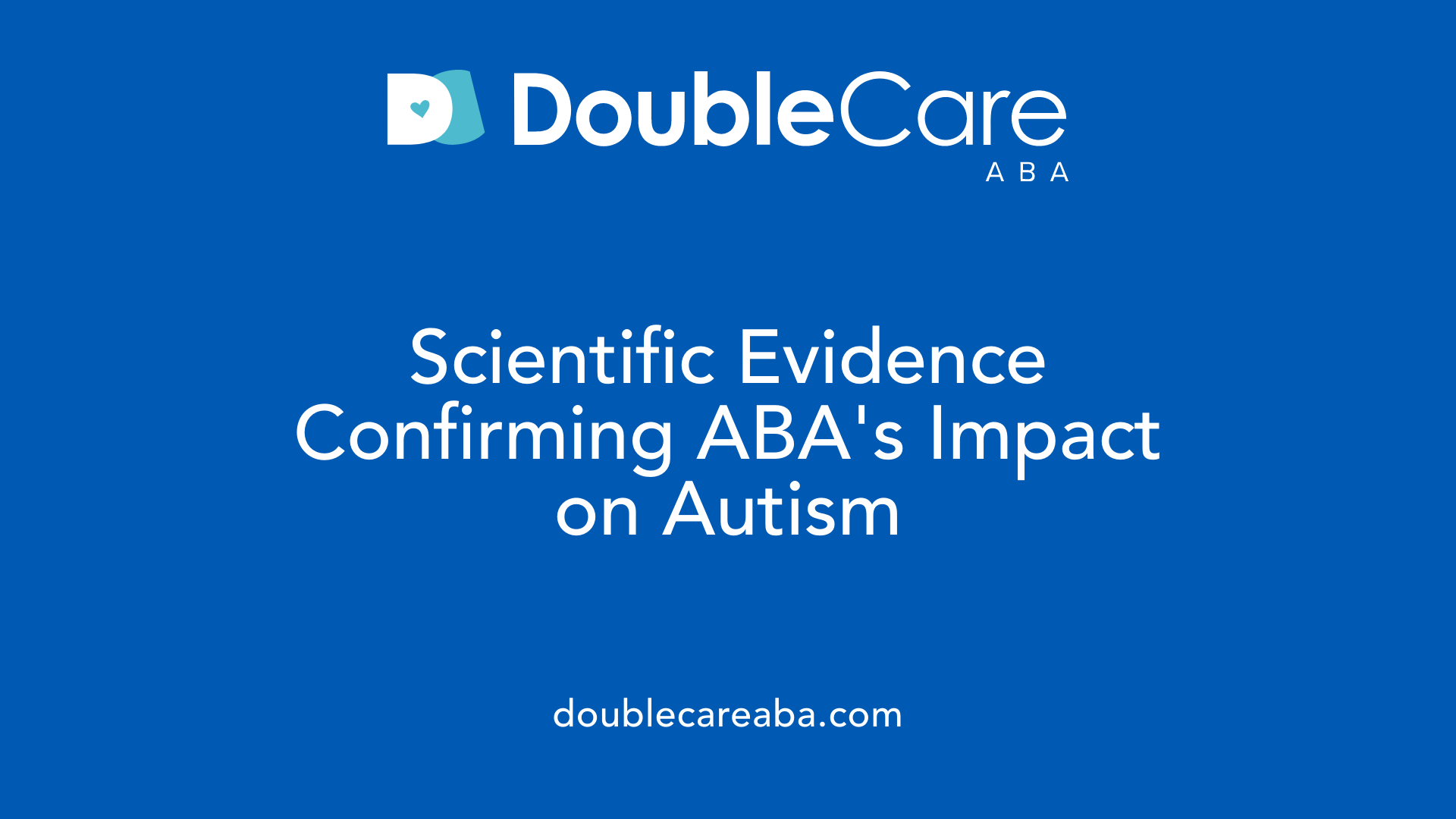Introduction to Rett Syndrome
Rett Syndrome (RTT) is a rare, severe, and progressive neurodevelopmental disorder that predominantly affects girls and typically emerges within the first two years of life. Characterized by a range of neurological and physical symptoms, RTT has a complex genetic basis and evolves through distinctive stages. Although there is currently no cure, advances in diagnosis, treatment, and supportive care are improving the quality of life for many affected individuals. This article explores Rett Syndrome's symptoms, underlying causes, and current treatment approaches to provide a comprehensive overview of this challenging condition.
Key Facts on Rett Syndrome and Behavioral Therapies
- Over 95% of Rett syndrome cases are linked to mutations in the MECP2 gene on the X chromosome.
- RTT begins with developmental delays followed by loss of hand skills, speech, and motor control, progressing through four stages.
- Genetic diagnosis mainly involves testing for MECP2, CDKL5, and FOXG1 mutations, but not all symptomatic individuals have identifiable mutations.
- RTT primarily affects females because mutations on the X chromosome are often lethal in males with only one X chromosome.
- Management includes medication (e.g., trofinetide for neurological symptoms), physical, speech, occupational therapies, and nutritional and behavioral support.
- Early diagnosis allows for timely, personalized interventions which can prolong mobility, communication, and overall quality of life.
- Variant forms caused by CDKL5 and FOXG1 mutations display earlier onset, more severe seizures, and distinct developmental profiles.
- Research is exploring gene therapies, epigenetic approaches, and novel pharmacologic treatments to address the root causes of RTT and its variants.
- Individuals with RTT can survive into middle age with proper surgical, medical, and supportive care, though morbidity depends on complications.
- A multidisciplinary approach incorporating therapies, early intervention, and family support significantly improves the outcomes and quality of life for affected individuals.
1. The Genetic Roots and Clinical Presentation of Classic Rett Syndrome
What is the genetic mutation involved in classic Rett syndrome?
Classic Rett syndrome (RTT) predominantly affects females due to its strong genetic link to the X chromosome. Over 95% of RTT cases are associated with mutations in the MECP2 gene. This gene encodes the methyl-CpG binding protein 2 (MECP2), a critical protein involved in regulating gene expression in the brain. Mutations in MECP2 disrupt this regulation, leading to the neurological symptoms characteristic of RTT.
What are the typical symptoms observed in RTT?
The clinical presentation of RTT typically begins to appear within the first two years of life. Core symptoms include:
- Microcephaly: This refers to slowed brain growth, resulting in an unusually small head size compared to age norms.
- Loss of Hand Skills: Children develop characteristic repetitive hand movements, such as wringing or washing motions, accompanied by a decline in purposeful hand use.
- Speech Decline: Verbal communication often diminishes or disappears during the progression of the disorder.
- Motor and Muscle Problems: These include problems with coordination and muscle control.
- Other Neurological Symptoms: These can include irregular breathing patterns and seizures.
How does RTT progress through its four clinical stages?
Rett syndrome evolves in a series of four distinct stages, each marked by changes in neurological and developmental status:
- Early Onset (Developmental Arrest): Subtle signs may appear such as delayed milestones and slowed growth, including microcephaly.
- Rapid Destructive Stage (Rapid Deterioration): Typically occurring between 1 and 4 years, this phase features loss of skills such as purposeful hand movements and acquired speech, along with the emergence of stereotypic hand movements.
- Plateau (Pseudostationary Stage): Symptoms stabilize, but challenges with motor function, breathing irregularities, and seizures persist.
- Late Motor Deterioration: Progressive loss of mobility and muscle tone occurs, often leading to increased physical disability.
How is RTT diagnosed?
Diagnosis relies on recognizing the characteristic pattern of symptoms along with confirmatory genetic testing. Clinical criteria focus on the distinct developmental regression and hand stereotypies.
Genetic testing primarily targets mutations in:
- MECP2 gene: Identification of mutations here confirms most RTT diagnoses.
- CDKL5 and FOXG1 genes: Testing for these genes helps identify variants of Rett syndrome.
It is important to note that not all individuals presenting with RTT symptoms have identifiable MECP2 mutations; hence, clinical observation remains critical.
Why does RTT primarily affect females?
RTT is almost exclusively observed in females due to its link with the X chromosome. Females have two X chromosomes, so mutations in one can allow some normal gene function from the other, permitting survival but resulting in the disorder. In males, who have only one X chromosome, MECP2 mutations usually lead to more severe outcomes, often fatal in infancy, which explains the rarity in males.
This genetic foundation coupled with progressive neurological symptoms and a well-defined clinical course forms the basis for understanding classic Rett syndrome's presentation and diagnosis.
2. Management and Therapeutic Interventions for Rett Syndrome

How is Rett Syndrome managed with medication?
Rett syndrome (RTT) currently has no cure, but symptom management through medication plays a crucial role in improving patients' quality of life. Various medications are prescribed to address specific symptoms such as seizures, irregular breathing, and muscle problems. A notable advancement in pharmacologic treatment is the recent FDA approval of trofinetide (Daybue) in 2023. This drug helps alleviate some of the neurological symptoms associated with RTT but does not cure the disorder.
Antiepileptic drugs are commonly used to control seizures, one of the more challenging symptoms of RTT. Additionally, medications may sometimes be given to control breathing irregularities and muscle spasms. The goal of these treatments is to reduce symptom severity, enhance daily functioning, and decrease complications.
What nonpharmacologic therapies support individuals with RTT?
Nonpharmacologic therapies form a vital part of managing RTT. Physical therapy helps improve mobility and muscle strength, counteracting gross motor delays and helping maintain motor skills for as long as possible. Speech therapy addresses the significant decline in verbal communication abilities seen in RTT; although many patients lose verbal skills, speech therapy can promote alternative communication methods.
Occupational therapy assists with daily living skills by focusing on hand use and coordination, vital given the characteristic loss of purposeful hand movements and the presence of hand stereotypies such as wringing. These therapies are tailored to each patient’s evolving needs through the different stages of the disorder.
How is nutritional and behavioral support integrated into care?
Feeding difficulties are common in RTT due to muscle coordination problems and swallowing issues, making nutritional support essential. Specialized feeding strategies, dietary adjustments, and sometimes enteral feeding ensure adequate nutrition and prevent complications like aspiration.
Behavioral support helps manage symptoms such as anxiety, irritability, and sleep disturbances. Multisensory approaches and behavioral therapy promote engagement, reduce discomfort, and contribute to emotional well-being.
Why is a multidisciplinary approach important?
Management of RTT involves a multidisciplinary team that may include neurologists, geneticists, therapists (physical, occupational, speech), nutritionists, and psychologists. This team works collaboratively to provide comprehensive care addressing the full spectrum of challenges faced by patients.
Coordination among these specialists ensures that interventions are timely and adapted as the disorder progresses through its stages: early onset, rapid destructive, plateau, and late motor deterioration. Such integrated care helps maintain function, reduce complications, and improve quality of life.
What is the significance of early diagnosis and intervention?
Early diagnosis of RTT, typically through clinical criteria and genetic testing for mutations in the MECP2 gene or related genes (CDKL5, FOXG1), is vital. Prompt recognition allows initiation of supportive therapies and symptom management sooner, potentially improving developmental outcomes and slowing symptom progression.
Although RTT is progressive, early intervention can help preserve functional skills and enhance communication and mobility. Families also benefit from early counseling and access to support services, which can improve overall care.
How do supportive services improve quality of life?
Supportive services such as counseling, social support, educational assistance, and respite care provide important relief for families and caregivers. These services foster an environment where individuals with RTT can achieve their highest possible functional potential and maintain comfort.
Access to specialized equipment, adaptive communication devices, and community resources also enhances independence and engagement. Such comprehensive support is essential to address the physical, emotional, and social challenges posed by RTT.
In summary, managing Rett syndrome requires a holistic, multidisciplinary approach. Medication, including the innovative use of trofinetide, helps control neurological symptoms, while various therapies support physical function, communication, and daily living. Nutritional and behavioral supports are critical for overall health. Early diagnosis and ongoing supportive services help maximize quality of life, enabling many affected individuals to live into adulthood with retained skills and meaningful engagement.
3. The Clinical Variants of Rett Syndrome and Ongoing Research Directions
What Are the Variant Forms of Rett Syndrome Caused by CDKL5 and FOXG1 Mutations?
Rett syndrome is primarily associated with mutations in the MECP2 gene; however, variant forms exist due to mutations in other genes such as CDKL5 and FOXG1. These variants exhibit similarities to classic RTT but also have distinct clinical features and progression.
The CDKL5 mutation often leads to early-onset seizures and more severe neurodevelopmental impairment compared to classic RTT. In contrast, FOXG1 mutation-related Rett variants tend to involve significant brain malformations and more profound developmental delays from infancy. Both variants contribute to the broader spectrum of Rett-related disorders.
How Do Symptoms and Progression Differ Compared to Classic RTT?
Classic Rett syndrome progresses through four stages: developmental arrest, rapid regression, a pseudostationary phase, and late motor deterioration. Variant forms associated with CDKL5 and FOXG1 mutations often deviate in their symptom timeline and severity.
For example, motor deterioration may be more severe or begin earlier in these variants. Seizures typically occur earlier and are more resistant to treatment, especially in CDKL5-related cases. Breathing irregularities, hand stereotypies, slowed brain growth (microcephaly), and loss of communication skills still occur but with variable intensity. Understanding these clinical differences is crucial for tailored management.
What Are the Current Research Directions on Gene Therapies and Novel Treatments?
Ongoing research in Rett syndrome has expanded beyond symptomatic management to explore innovative treatments, including gene therapy. Scientists are investigating techniques to correct or compensate for the defective MECP2 gene and potentially CDKL5 and FOXG1 mutations.
Studies are focusing on:
- Gene replacement therapies to restore normal protein function.
- Epigenetic modulation approaches aimed at reactivating healthy gene copies.
- Pharmacologic interventions such as the FDA-approved drug trofinetide (Daybue), which has shown symptom improvement but not a cure.
- Multisensory integration therapies and novel behavioral interventions to enhance neuroplasticity.
Experimental animal models and early-phase clinical trials are ongoing to assess safety and efficacy.
What Is Known About Life Expectancy and Long-Term Outcomes?
Life expectancy in individuals with Rett syndrome varies but many can survive into middle age or beyond with appropriate care. Long-term outcomes largely depend on the severity of symptoms, presence of cardiorespiratory complications, and effectiveness of multidisciplinary management.
Cardiorespiratory issues, seizures, and nutritional challenges are leading contributors to morbidity and mortality. However, supportive therapies, respiratory monitoring, and seizure control can significantly improve survival rates.
How Does the Focus on Functional Skills and Multidisciplinary Care Improve Quality of Life?
A core component of managing Rett syndrome and its variants involves a multidisciplinary approach. This includes:
- Physical therapy to maintain mobility and prevent contractures.
- Occupational therapy to support hand function and daily activities.
- Speech therapy to optimize communication, often supplemented by assistive devices.
- Nutritional support to address swallowing difficulties.
- Behavioral therapy to support cognitive and emotional health.
Early diagnosis enables timely intervention, promoting retention and improvement of functional skills. Regular assessments allow individualized care plans, adapting as symptoms evolve through the disease stages.
This comprehensive care approach not only manages symptoms but also enhances participation and quality of life for individuals with Rett syndrome and its variants.
| Aspect | Classic RTT (MECP2) | Variant RTT (CDKL5, FOXG1) | Commentary |
|---|---|---|---|
| Genetic Mutation | MECP2 (over 95% cases) | CDKL5, FOXG1 | Different gene mutations influence severity and symptoms |
| Symptom Onset | Within first 2 years | Often earlier in CDKL5 (early seizures) | FOXG1 variants involve congenital brain abnormalities |
| Seizure Profile | Common, variable onset | Early, severe, treatment-resistant in CDKL5 | A major challenge across variants |
| Disease Progression | Four stages: developmental arrest to late deterioration | Variable; often faster or more severe | Affects intervention timing |
| Treatment Approaches | Symptom management, physical & speech therapy, trofinetide | Similar, but may require more intensive seizure control | Multidisciplinary care essential |
| Life Expectancy | Into middle age with supportive care | Typically similar but can vary | Depends on complication management |
| Research Focus | Gene therapy, pharmacologic agents like trofinetide | Emerging; early trials ongoing | Hope for future targeted therapies |
Applied Behavior Analysis (ABA) Therapy in Autism Support

What is Applied Behavior Analysis (ABA) therapy, and how is it used to support individuals with autism?
Applied Behavior Analysis (ABA) therapy is a scientific approach that applies principles of learning and behavior to help individuals with autism spectrum disorder (ASD). Its main goal is to increase positive behaviors—like communication, social interactions, and self-care skills—and reduce behaviors that can be challenging or harmful.
Core Methods in ABA Therapy
ABA uses techniques such as positive reinforcement, where desired behaviors are rewarded to encourage repetition. Structured teaching methods, such as Discrete Trial Training (DTT) and Pivotal Response Treatment (PRT), break skills down into smaller, manageable steps that are taught systematically. These methods help individuals learn new skills effectively by providing clear instructions, prompts, and consistent feedback.
Individualized Treatment Plans
Each ABA program is tailored to the unique needs of the individual. Qualified behavior analysts develop these personalized plans by conducting assessments and collecting ongoing data. This continuous monitoring ensures that treatment adapts as the individual progresses, focusing on areas where support is most needed.
Settings for ABA Therapy Delivery
ABA therapy can be provided in various environments including the home, clinics, schools, or community settings. This flexibility allows therapists to work within naturalistic settings, making learning more relevant and generalizable. Family involvement is often encouraged to support consistent practice and skill reinforcement.
Evidence Supporting ABA Effectiveness
Extensive research supports ABA as an effective treatment for improving developmental outcomes in individuals with autism. Early and intensive ABA interventions have been linked to improvements in communication, social skills, and adaptive behaviors. Because it is evidence-based, ABA is widely regarded as a best practice treatment that enhances quality of life for many individuals with ASD.
Professionals Providing ABA Therapy and Their Qualifications

What types of professionals typically provide ABA therapy, and what qualifications do they hold?
Applied Behavior Analysis (ABA) therapy is primarily provided by trained professionals such as Board Certified Behavior Analysts (BCBAs) and Registered Behavior Technicians (RBTs). Each plays a distinct role in the delivery of ABA services.
Board Certified Behavior Analysts (BCBAs) are specialists with advanced educational backgrounds, usually holding a Master’s or Doctoral degree in fields like psychology, education, or behavior analysis. They obtain their certification through the Behavior Analyst Certification Board (BACB), which requires passing a rigorous exam and completing substantial supervised practical experience. BCBAs design, oversee, and evaluate individualized intervention plans tailored to each client’s unique needs.
Registered Behavior Technicians (RBTs) are front-line practitioners who implement these intervention plans under the close supervision of BCBAs. RBTs typically complete specific training programs consisting of 40 hours of coursework aligned with BACB standards, alongside practical supervised experiences. While RBTs do not design interventions themselves, their role in daily therapy delivery is critical to the success of the treatment.
Education, certification requirements, and ethical standards
Both BCBAs and RBTs must adhere to continuing education requirements to maintain their certifications. This ensures they stay updated on the latest advances in behavior analytic methods and maintain high ethical standards in practice per BACB’s Professional and Ethical Compliance Code.
BCBAs are responsible for regularly reviewing progress data and modifying intervention strategies as needed, emphasizing evidence-based approaches such as reinforcement schedules, modeling, task analysis, and behavioral chaining.
Skills in individualized intervention design and implementation
Professionals trained in ABA therapy demonstrate competencies in assessing behavior, setting measurable goals, and selecting precise techniques for skill acquisition or behavior reduction. Each intervention is personalized, often involving collaboration with families and other caregivers to maximize generalization and maintenance of skills across settings.
In summary, ABA therapy providers must obtain comprehensive education and credentials, engage in lifelong learning, and possess sharp clinical skills to deliver effective, ethical, and individualized behavioral interventions.
Tailoring ABA Therapy to Individual Needs
How does ABA therapy tailor interventions to individual needs?
ABA (Applied Behavior Analysis) therapy customizes interventions to suit each child's unique profile by starting with a detailed assessment of behaviors, strengths, and learning styles. This comprehensive evaluation allows therapists to understand how a child learns and what areas need support.
Board-certified behavior analysts (BCBAs) then create individualized intervention plans. These plans include clear, feasible goals that focus on enhancing vital skills such as communication, social interaction, and daily living activities. The aim is to foster independence and meaningful progress in ways that stand out for each child.
Registered Behavior Technicians (RBTs) play a crucial role in the hands-on delivery of therapy. They work directly with children, practicing targeted skills and reinforcing positive behaviors consistently within a structured setting. This direct support helps children apply what they learn in real-time.
A significant aspect of tailoring ABA therapy is ongoing data collection and analysis. Therapists track the child's progress closely and use these data-driven insights to fine-tune interventions continually, addressing any emerging challenges or capitalizing on new strengths. This dynamic approach ensures therapy evolves alongside the child's developing needs.
By embracing this personalized, flexible process, ABA therapy maximizes effectiveness. Each intervention is adapted to the individual, leading to improved outcomes and empowering children to achieve their full potential.
Evidence Supporting the Effectiveness of ABA Therapy

What evidence supports the effectiveness of ABA therapy for autism?
Numerous studies and meta-analyses firmly establish Applied Behavior Analysis (ABA) therapy as a highly effective treatment for children with Autism Spectrum Disorder (ASD). Research consistently demonstrates that ABA therapy leads to statistically significant improvements in several critical areas:
IQ and Intellectual Abilities: Meta-analyses report an effect size of approximately g=0.740, indicating meaningful enhancements in cognitive functioning.
Language and Communication: Language skills, particularly expressive language, show notable improvements with an effect size near g=0.742.
Adaptive Behaviors: Children undergoing ABA therapy gain better daily living and social skills, which are vital for independence.
ABA programs are characterized by their systematic and individualized nature. They are often initiated early in a child's development, which is crucial since early, intensive therapy yields better outcomes. Benefits observed include reductions in autism severity, fewer behavioral problems, and increased academic and social skills.
Another important aspect of ABA therapy's success is parental involvement. Training parents to implement ABA strategies ensures that skill development generalizes beyond clinical settings to home and community environments. This boosts the sustainability of therapeutic gains and enhances overall quality of life.
ABA is widely recognized as an evidence-based practice. Its effectiveness is supported by extensive scientific research across diverse settings, including homes, schools, and clinical environments. Clinical guidelines internationally endorse ABA for its strong scientific backing.
In summary, ABA therapy stands out as a robust, research-supported intervention that significantly improves intellectual, language, and adaptive outcomes in children with autism through early, individualized, and comprehensive approaches.
Criticisms and Limitations of ABA Therapy

What are some criticisms or limitations of ABA therapy?
Applied Behavior Analysis (ABA) therapy has been widely used, particularly for individuals with developmental disorders, but it faces notable criticisms and limitations.
One major concern is the intense, highly structured nature of ABA therapy. This level of rigidity can be overwhelming and stressful for some individuals, leading to discomfort or resistance. For many, the therapeutic process feels less like supportive guidance and more like strict behavioral control.
Another key criticism is ABA's focus on behavior modification often overshadowing the individual's personal preferences and emotional well-being. Critics argue that ABA prioritizes compliance and observable behavior changes over honoring the individual's autonomy and unique traits. This approach can sometimes result in neglecting the emotional needs and authentic self-expression of the person receiving therapy.
Quality and ethical practices also vary widely among ABA service providers. Differences in practitioner training, supervision, and ethical standards can influence the effectiveness of treatment and the overall experience for the client. Instances of overly rigid or poorly implemented ABA programs have fueled calls for improved regulation and oversight.
In response to these concerns, advocates increasingly promote more holistic, person-centered approaches. These emphasize respect for individual autonomy, emotional health, and personal choice. Such approaches seek to balance behavioral goals with fostering self-acceptance and understanding, rather than solely enforcing behavioral compliance.
Overall, these criticisms invite ongoing reflection, adaptation, and improvements within ABA therapy. Greater sensitivity to individual needs and ethical standards can enhance therapy outcomes and client satisfaction.
Looking Ahead: Progress and Hope in Rett Syndrome Care
Rett Syndrome remains a complex and challenging condition with profound impacts on affected individuals and their families. Advances in genetic understanding, therapeutic options, and supportive care have contributed to improved management and enhanced quality of life for many. While no cure exists, multidisciplinary approaches that include symptom-targeted medications, specialized therapies, and emerging treatments offer renewed hope. Ongoing research into gene therapy and novel interventions continues to expand the horizon for potential breakthroughs. Awareness, early diagnosis, and comprehensive care remain critical to maximizing outcomes and supporting the unique needs of those living with Rett Syndrome.
References
- Rett Syndrome: Symptoms, Causes, and Treatment Options
- Rett Syndrome: Practice Essentials, Background, ...
- How Personalized ABA Therapy Promotes Progress
- Qualifications of Practitioners/Consultants who Practice in ...
- The effectiveness of applied behavior analytic interventions ...
- Applied Behavior Analysis (ABA)
- Applied Behavior Analysis (ABA)
- Introduction to Applied Behavior Analysis: ABA 101














